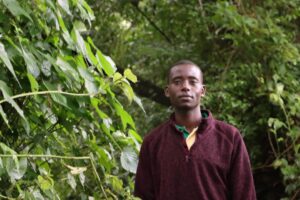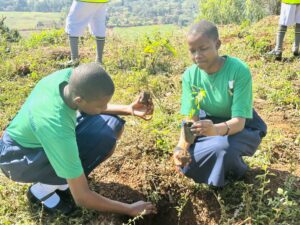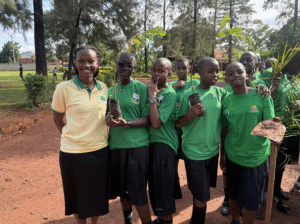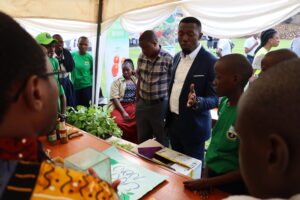The demands for practical models to address climate change are increasing each passing day.
The weather extremes have continued due to human activities, particularly the burning of fossil fuels and deforestation. The evidence that humans are causing climate change, with drastic consequences for life on the planet, is overwhelming. Addressing climate change will require many solutions—and there’s no magic bullet and one-fits-all solution. Nearly all of these solutions exist today. It only requires right approaches and context-based practical solutions. Aiming at large-scale models that the world is busy debating on is good. Granted. However, individual actions and localized solutions can play an equally important, if not better, role in addressing climate change. Laudato Youth initiative, with our mundane resources, is prioritizing practical models to address this challenge.
First, Reforestation and Afforestation— Forests play an essential role in absorbing water from the atmosphere, making reforestation (planting trees in deforested areas) and afforestation (planting trees in areas that were not previously forested) crucial solutions to combat climate change. Protecting existing forests and preventing deforestation is just as important as planting new trees. Ensuring sustainable forestry practices can help preserve vital ecosystems.
Urbanization is increasing in Uganda therefore creating urban green spaces to reduce emissions by incorporating more green spaces, such as urban forests, parks, and rooftop gardens is paramount. These not only help absorb floods in cities but also improve air quality, reduce urban heat island effects, and enhance biodiversity. Moreover, sustainably managed forests are the best climate protectors. Natural forests are not the best way to protect the climate. Ugandan forests are in a critical state. That is why support for forest owners is crucial if we are serious about climate mitigation. Initiatives such as urban forests and parks contribute to climate change mitigation.
Climate Education and Advocacy; one of the most powerful solutions to combat climate change is spreading awareness and advocating for policies that prioritize sustainability. Engaging communities especially youth who are the majority is a guarantee for climate change mitigation knowledge and protection. After all it’s the population that will be making decision in the next few years. As public demand for climate action increases, governments, businesses, and organizations are more likely to implement effective solutions. Education Campaigns to raise awareness about the science of climate change, its impacts, and actionable solutions is vital for empowering people to take individual and collective action.
Regenerative Agriculture and land use; Appreciating that Uganda is an agrarian country, and agriculture is a significant emitter of greenhouse gases, but it also holds the potential for solutions. Regenerative farming practices go beyond sustainability, aiming to restore soil health, increase biodiversity, and sequester carbon in the ground. We train farmers in agroforestry– integrating trees into agricultural landscapes to enhance carbon sequestration, improve soil fertility, and provide additional revenue sources for farmers through timber or fruit production. Additionally, we emphasize rotational grazing—the practice that involves moving livestock between different pasture areas to allow the land to recover and increase the ability of the soil to store carbon.
Digital media for climate change mitigation; the practical digital media campaigns not only advance knowledge but create engagements enabling climate change mitigation solutions. Information about environment and climate change the mindsets and challenge target audience to act. The biggest challenge to climate change adaptation measures acceptance is behavioral change. Uprooting such behaviors goes a long way in addressing the issue.
Important to note is that at the core of our work, we let beneficiaries not be passive, we make them active sources of information and fully involved in the projects.
This is why it is important to focus much more on them and work with them, for example, primary beneficiaries—local people to ensure intrinsic value.
Benard Kahwa
Director Laudato Youth Initiative














